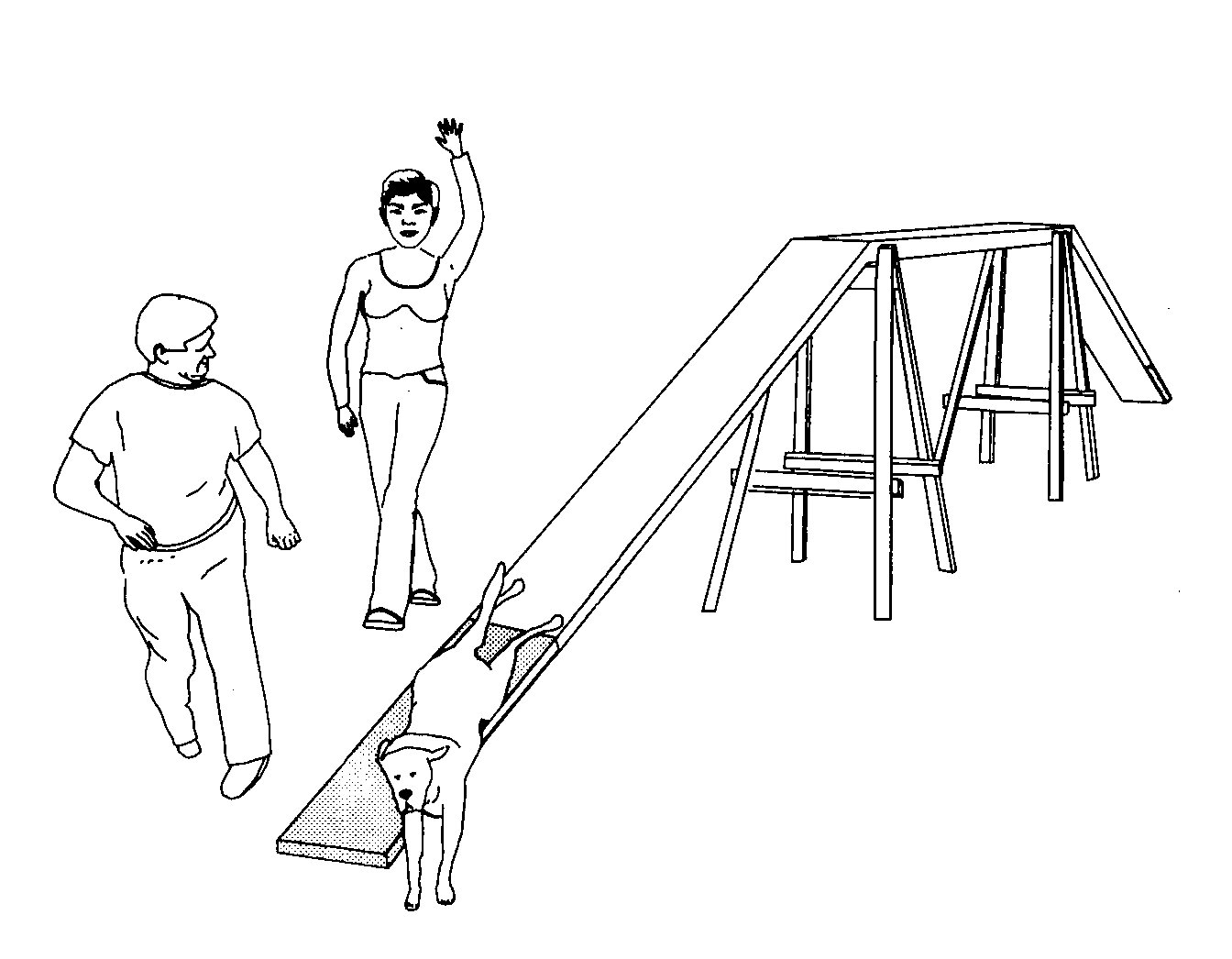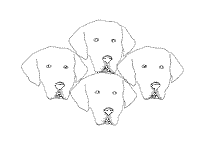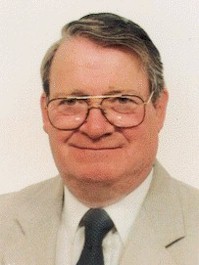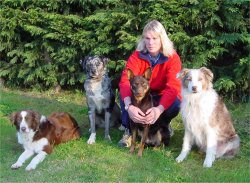Everything you need to know to be a good judge
Written and illustrated by Peter Lewis
Reviewed by Angela Williams
 Description:
A manual to assist judges to become as good as possible at their job and to explain in detail
how other agility games are played. It covers both the UK and International judging, plus the
accepted rules of a variety of different games.
Description:
A manual to assist judges to become as good as possible at their job and to explain in detail
how other agility games are played. It covers both the UK and International judging, plus the
accepted rules of a variety of different games.
Contents include:-
- About Peter Lewis
- Author's introduction
- General judging appraisal
Why be a judge?
Judge's criteria
What the judge needs
Other useful terms
- Elimination, course & obstacle faults
Elimination
Course faults
Basic obstacle faults: tyre, tunnels
- Course building and judge's position
Prime obstacles
Secondary obstacles
Basic obstacles
The Start and Finish
- Judging on the day
- Stewards/assistants
- Possible course problems
- Other agility games
Team and Pairs,
Team and Pairs Relay
Knockout
Circular knockout
Knockout relays, handicap, Gamblers
Time, Fault & Out
Power & Speed
|
|
Best
Features:
This book covers everything you need to know about judging, from leaving home in the
morning and what to wear to judging the fun agility classes, which we never see anymore,
probably due to time and numbers entered in shows these days.
The author spends a great deal of time during the beginning of the book
discussing the reasons for judging and the type of person it takes to stand in the ring all day
(8 hours) and assess each dog exactly the same. He stresses the need to be there to see each
contact and to be in the right position to watch every obstacle. This takes a certain degree of
mobility, fitness and concentration especially if there are 450 dogs in that class.
He also makes it quiet clear that any potential judge should know the rules
as they will not have time to stop and consult the Red Book halfway through the class. An
ability to make a quick decision is needed as well.
I thought this bit was great 'If the judge is asked to adjudicate 400 runs
then he has to judge 2,400 contacts. On the assumption that 10% of these will require him to
make a fine judgement, that will be 240 tight decisions.' When put like that, it is a little
bit daunting.
After this somewhat frightening introduction if you have not been discouraged
from judging altogether, there are several pages of useful information covering what to wear,
what the judge will need to take with him/her on the day. I liked the mention of marking the
grass with a coloured aerosol spray how many times have you seen obstacles slowly moving
throughout the day ? therefore changing the course as the day goes on.
The next part covers the main part of judging including the 'big E' and other
faults. Each obstacle is discussed individually with examples given and including diagrams that
are self-explanatory and help make things a great deal clearer.
Course building is covered in great detail with an emphasis on matching the
type and difficulty of a course with the level of the class and abilities capable of dogs at
that standard, something that many judges today seem to forget. Much time is spent on
explaining clearly the position of the judge in regard to specific obstacles so that any dogs
wing jumping , entering tunnels or jumping through the side of a frame tyre can be clearly seen
- all all things that can be easily missed if the judge is standing in the wrong place in the
ring.
One of the final chapters covers judging on the day and includes those handy
little tips the things you need to know but never wanted to ask.
The last chapter covers all the old agility classics and how to judge them:
Teams, Pairs, Relays, Knockouts, Gamblers, Time Fault & Out, Power & Speed, Helter Skelter and
Snooker.
Could be improved:
When referring to the judges attire perhaps the author was being
polite by not going into too much detail, but I feel he needs to mention the footwear worn by
the judge especially if agility is being judged and the contacts have to be marked. High heels
are just not appropriate!
Don’t forget that sun cream and a sun hat How many judges have you seen leave
the ring with sunburn at the end of the day!
Potential judges should also remember that agility rules can change
frequently sometimes from one season to the next. e.g. marking of the weaves.
I do feel that a little more space could have been given to judging specific
obstacles. I appreciate perhaps the author was restricted to space but more diagrams and
examples would have been useful to explain marking of the obstacles in certain situations.
Often it is the new judges who make mistakes and are not sure what to do in strange situations
which commonly occur in Starter classes where new judges inevitably end up judging.
Presentation, design & format:
The book is well laid out and easy to read. As it is ring bound, it
should wear well. It is designed so that the pages can be folded back on itself. There are a
lot of diagrams which demonstrate the judge’s position in relation to the handler and the dog.
These are clearly drawn and easy to understand.
.
Overall Rating: Overall I
thought this book deserved 8/10. It is valuable reading for new judges and anyone who may be
thinking about it.
Price: £8.00
including post and packing.
Value for Money: This book is
also useful reading for anyone who is thinking of competing at agility as I do think that
everyone involved in the sport should at least have a basic understanding of the rules and how
a course will be judged.

Enquiries to: -
Canine Publications
DEPT AN
21 Burridge Road, Burridge, Southampton SO31 1BY
Tel. 01489-885112
Also available from

YOUR FIRST STOP, ONE
STOP SHOP FOR AGILITY THINGS
 About
the Author
About
the Author
Peter Lewis has been training dogs for in excess of 40 years. During that time, he has
trained many dogs for competition disciplines and taken them to the top of each sport. They are
Obedience, Working Trials and Agility, and he is in demand to judge and teach all of these dog
sports across the world.
He has been involved as an instructor and teacher of
instructors for very many years and has also founded four dog clubs. Apart from club work, he
has spent many years working professionally teaching pet dog owners how to have a well behaved
dog. Such has been his success sin this field that over 50 different veterinary surgeons refer
owners to him. He is also a member of the Canine and Feline Behaviour Association.
Regarding agility, he has been acknowledged as having
played a major part in establishing the sport in the UK and around the world.
Although most of his time has been spent hands-on with
dogs and dog people, he has also found time to write and produce in excess of ten books and
videos.
 About
The Reviewer
About
The Reviewer
Angela Williams started off doing Obedience competitions with her
Rottweiller Poppy who took her all the way to Class 'B' in Open Obedience competitions. Angie
purchased another dog to do Obedience. this time a farm collie called Alf who is a red merle.
It was about this time that she saw Agility on TV, probably Crufts, and
started asking if anyone knew of an agility club nearby. Donyatt Agility club was 18 miles
away. They joined and have never looked back. Goodbye Obedience. This was far more exciting!
She taught Poppy to do agility and though she enjoyed it, never won anything.
Alf, on the other hand, has taken her all the way from Elementary to Advanced and is now eight.
She also has Ed, her Valgray dog who is six and in Senior and Burt, her
(homebred by accident) Rottie X Lurcher who is six - also Senior. Her new dog is an
Australian Kelpie called Pi who is two and is just starting her first agility season.
Angie is still a member of Donyatt Agility Club and also teaches at the club
on Thursday evenings.